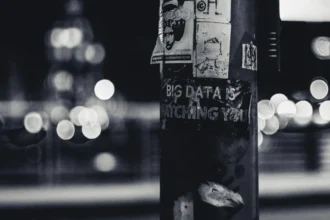The Handbook on Cyber Hate: The Modern Cyber Evil, edited by Anne Wagner and Sarah Marusek, is an essential interdisciplinary work addressing the complex phenomenon of cyber hate.
Bringing together international experts from diverse fields such as law, psychology, cultural studies, and semiotics, the book offers a comprehensive examination of the growing prevalence of online aggression.
The opening chapter, “Navigating the Murky Waters of Modern Cyber Evil” (pp. 1-12), aptly introduces the various aspects of digital aggression, framing cyber hate as a dynamic and pervasive challenge in our interconnected world.
1. Context and Scope
The editors present cyber hate as a modern form of malice enabled by the digital revolution. The introductory chapter likens the spread of cyber evil to the rhizomatic growth of a plant, signifying its decentralized and complex nature.
Understanding the psychological aspects of cyber hate is crucial for developing more effective interventions.
Cyber hate can manifest in various forms, including online harassment, trolling, and cyberbullying, all of which traverse geographic and cultural boundaries. The book’s scope covers a range of topics from the challenges of legal regulation to the psychological toll on victims and the reflection of cyber hate in media and culture.
Through contributions from diverse academic disciplines, the Handbook on Cyber Hate provides a multifaceted view of the digital aggression landscape, stressing the need for collaborative efforts to combat this issue across legal, social, and technological fronts.
2. Main Arguments
2.1. Legal Complexities and Cyber Hate Regulation
The legal regulation of cyber hate is a central theme in the book, particularly the challenge of governing behavior that transcends national borders. In his chapter “The Legal Categorization of Cyber Hate: A Corpus-Assisted Exploration” (pp. 237–260), Daniel Green discusses how inconsistencies in defining cyber hate complicate efforts to enforce legal responses. He shows that traditional legal categories are often insufficient for addressing the nuances of online aggression.
Cyber hate is not only a legal challenge but also a profound psychological and emotional issue.
Aashish Srivastava’s chapter, “Social Media and Online Trolling: Examining the Legal Developments in Platform Responsibilities” (pp. 275–300), further explores how social media companies must be held accountable for moderating hate speech and trolling.
Srivastava argues that these platforms need to implement more robust moderation tools and enforce clear policies to reduce the harm caused by online hate.
2.2. E-victimization and E-predation Theory
Anne Wagner’s E-victimization and E-predation theory, initially presented in a 2019 special issue of Social Semiotics, is expanded in this volume (pp. 303–318).

Wagner explores how e-predation, a term that encompasses a wide range of digital attacks such as cyberbullying and harassment, leaves victims with long-lasting psychological scars, effects that are further amplified by the two-sided E-Agora 2.0, where online platforms foster both democratic engagement and harmful behaviors like cyberbullying and trolling, profoundly impacting victims’ mental well-being and social lives.
Additionally, Wagner and Yu’s concept of the Machiavellian apparatus of cyberbullying (2021) is discussed (pp. 945–963), explaining how aggressors manipulate digital platforms to control their victims through deception, anonymity, and targeted harassment. This theory sheds light on the strategic nature of online aggression and the challenges of addressing it within legal frameworks.
2.3. Cyber Envy
Massimo Leone’s chapter, “Cyber Envy” (pp. 15–34), provides a psychological perspective on one of the root causes of online aggression. Leone argues that envy—provoked by the curated, idealized lives displayed on social media—fuels much of the hate and trolling seen online.
Social media platforms amplify envy by constantly showcasing the successes, appearances, and lifestyles of others, creating emotional responses that often lead to acts of aggression. While cyber envy manifests as personal attacks or hateful comments, it also reflects the deeper emotional struggles individuals face in the digital age.
Leone highlights how this envy-driven aggression becomes performative, turning acts of online hate into social spectacles aimed at gaining validation from peers. This emotional and psychological angle is essential for understanding how online aggression is fueled by more than just ideological or social differences.
2.4. Cultural Reflections of Cyber Hate
In “Cyberbullying Movies: The Relevance of the Cinematic Portrayal of Cyberbullying” (pp. 425–442), Marcel Danesi examines how films and television shows portray cyberbullying, raising awareness about its impacts.
Although often dramatized, these depictions help audiences grasp the real-world consequences of digital aggression. Danesi argues that media representations serve as a catalyst for broader societal conversations about online behavior and its repercussions.
Conclusions and Future Research Directions
The Handbook on Cyber Hate lays the groundwork for further exploration into the complex nature of online aggression. As demonstrated by Anne Wagner’s theories of E-victimization and the Machiavellian apparatus of cyberbullying, cyber hate is not only a legal challenge but also a profound psychological and emotional issue. Future research should focus on understanding how cyber hate affects vulnerable populations, including minorities and adolescents, who are frequently targeted in digital spaces.
Massimo Leone’s exploration of Cyber Envy provides valuable insight into the emotional drivers of online aggression. Social media’s role in amplifying feelings of inadequacy and envy highlights the need for strategies that promote emotional resilience and digital empathy. Understanding the psychological aspects of cyber hate is crucial for developing more effective interventions.
As the introductory chapter suggests, the spread of cyber evil is decentralized and adaptive, necessitating similarly flexible responses. International cooperation is essential for addressing this global issue, and social media platforms must continue to enhance their moderation efforts to mitigate harm while preserving freedom of expression.
In conclusion, The Handbook on Cyber Hate: The Modern Cyber Evil is an indispensable resource for scholars, policymakers, and practitioners seeking to understand and confront the growing menace of online aggression. It offers a rich theoretical foundation and practical insights that will be invaluable as the digital world continues to evolve.












